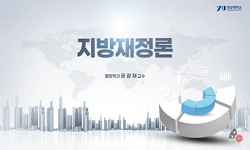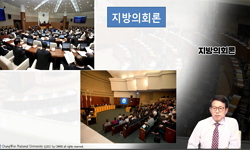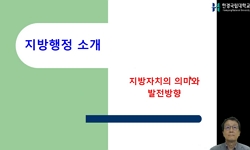Sarcopenia, obesity, and osteoporosis, the three disorders of body composition, are growing in prevalence. Osteoporosis and obesity werethought to be mutually exclusive conditions, as were sarcopenia and obesity. However, these disorders are commonly ...
http://chineseinput.net/에서 pinyin(병음)방식으로 중국어를 변환할 수 있습니다.
변환된 중국어를 복사하여 사용하시면 됩니다.
- 中文 을 입력하시려면 zhongwen을 입력하시고 space를누르시면됩니다.
- 北京 을 입력하시려면 beijing을 입력하시고 space를 누르시면 됩니다.

다양한 비정상적인 신체 조성의 표현형들: 근육, 지방 및 뼈의상호작용 = Diverse Abnormal Body Composition Phenotypes: Interaction Between Muscle, Fat, and Bone
한글로보기부가정보
다국어 초록 (Multilingual Abstract)
Sarcopenia, obesity, and osteoporosis, the three disorders of body composition, are growing in prevalence. Osteoporosis and obesity werethought to be mutually exclusive conditions, as were sarcopenia and obesity. However, these disorders are commonly observed in the aging processand recent studies have indicated a potential interconnection among them with interaction between muscle, bone, and fat. Therefore, itwould not be appropriate to discuss sarcopenia, obesity, and osteoporosis without bearing in mind the complex interactions of muscle, fat, andbone tissue. Due to the complicated interaction among them, the phenotypes have been given various names depending on the proposed causeor the combination of sarcopenia, obesity and osteoporosis. Therefore, we introduce new terms concerning the diverse phenotypes of bodycomposition. In addition, this paper describes the interaction between muscle, fat and bone from a hormonal aspect and in terms of the wholebody. Unraveling the link between muscle, fat, and bone at both the micro and macro level will elucidate the reasons for abnormal body compositionphenotypes, and further enhance new therapeutic options for sarcopenia, obesity, and osteoporosis.
국문 초록 (Abstract)
이 질환들의 다양한 요인들과 각 질환들의 여러 조합으로 나타나는다양한 표현형들로 인해 새로운 용어들이 등장하고 있으나 아직 많은 연구자들에게는 생소하게 여겨지는 용어들이 많다. 이들 새로운용어들을 정리하는 것은 신체조성 변화에 따르는 문제들을 이해하는 데 도움을 줄 수 있을 것이다. 또한, 그 동안 많은 생체 내외 연구들을 통해 신체조성의 각 조직들이 내분비계 기관으로서의 역할을 한다는 것을 알게 되었고, 각 조직들 간에는 활발한 교류가 이루어짐을확인할 수 있었다. 앞으로 근육, 뼈, 지방 사이의 복잡한 관계를 밝히기 위해서는 각 조직에서 나오는 인자들이 다른 조직의 여러 세포와이화/동화 과정에 어떠한 경로로 영향을 주는지에 대한 추가적인 규명이 더 필요할 것이다. 이러한 상호관계가 미시적에서부터 거시적 수준까지 밝혀지게 되면, 근감소증, 골다공증, 비만과 같은 비정상적인신체조성 표현형들에 대한 예방 및 치료법 개발에도 많은 기여를 할것으로 생각된다.
근감소증, 골다공증 및 비만은 인구의 노령화와 더불어 유병률이계속적으로 증가하고 있는 추세이다. 이들 질환들은 노인 인구의 신체기능의 감소 및 장애뿐만 아니라 사망률 증가에도 중...
근감소증, 골다공증 및 비만은 인구의 노령화와 더불어 유병률이계속적으로 증가하고 있는 추세이다. 이들 질환들은 노인 인구의 신체기능의 감소 및 장애뿐만 아니라 사망률 증가에도 중대한 영향을미치고 있다. 오랫동안 골다공증과 비만은 상호 배타적인 관계로 여겨져 왔다. 마찬가지로 근육량과 지방량도 서로 양의 상관관계가 있으므로 비만 환자에서 근감소증이 발생하는 경우는 드물 것으로 제시되어 왔다. 그러나, 근감소증, 골다공증 및 비만은 일반적으로 노화과정에서 자주 같이 관찰되며, 최근의 연구는 근육, 뼈 및 지방 간의상호작용으로 이 질환들이 상당한 연관성이 있음을 보여주고 있다.
이 질환들의 다양한 요인들과 각 질환들의 여러 조합으로 나타나는다양한 표현형들로 인해 새로운 용어들이 등장하고 있으나 아직 많은 연구자들에게는 생소하게 여겨지는 용어들이 많다. 이들 새로운용어들을 정리하는 것은 신체조성 변화에 따르는 문제들을 이해하는 데 도움을 줄 수 있을 것이다. 또한, 그 동안 많은 생체 내외 연구들을 통해 신체조성의 각 조직들이 내분비계 기관으로서의 역할을 한다는 것을 알게 되었고, 각 조직들 간에는 활발한 교류가 이루어짐을확인할 수 있었다. 앞으로 근육, 뼈, 지방 사이의 복잡한 관계를 밝히기 위해서는 각 조직에서 나오는 인자들이 다른 조직의 여러 세포와이화/동화 과정에 어떠한 경로로 영향을 주는지에 대한 추가적인 규명이 더 필요할 것이다. 이러한 상호관계가 미시적에서부터 거시적 수준까지 밝혀지게 되면, 근감소증, 골다공증, 비만과 같은 비정상적인신체조성 표현형들에 대한 예방 및 치료법 개발에도 많은 기여를 할것으로 생각된다.
참고문헌 (Reference)
1 Binkley N, "What’s in a name revisited:should osteoporosis and sarcopenia be considered components of “dysmobility syndrome?”" 24 : 2955-2959, 2013
2 Clark BC, "What is dynapenia?" 28 : 495-503, 2012
3 Matkovic V, "Timing of peak bone mass in Caucasian females and its implication for the prevention of osteoporosis. Inference from a cross-sectional model" 93 : 799-808, 1994
4 Goodpaster BH, "Thigh adipose tissue distribution is associated with insulin resistance in obesity and in type 2 diabetes mellitus" 71 : 885-892, 2000
5 Hamrick MW, "The skeletal muscle secretome: an emerging player in muscle-bone crosstalk" 1 : 60-, 2012
6 Cairns DM, "The role of muscle cells in regulating cartilage matrix production" 28 : 529-536, 2010
7 Wang MC, "The relative contributions of lean tissue mass and fat mass to bone density in young women" 37 : 474-481, 2005
8 Vettor R, "The origin of intermuscular adipose tissue and its pathophysiological implications" E987-E998, 2009
9 Goodpaster BH, "The loss of skeletal muscle strength, mass, and quality in older adults: the health, aging and body composition study" 61 : 1059-1064, 2006
10 Gimble JM, "The function of adipocytes in the bone marrow stroma: an update" 19 : 421-428, 1996
1 Binkley N, "What’s in a name revisited:should osteoporosis and sarcopenia be considered components of “dysmobility syndrome?”" 24 : 2955-2959, 2013
2 Clark BC, "What is dynapenia?" 28 : 495-503, 2012
3 Matkovic V, "Timing of peak bone mass in Caucasian females and its implication for the prevention of osteoporosis. Inference from a cross-sectional model" 93 : 799-808, 1994
4 Goodpaster BH, "Thigh adipose tissue distribution is associated with insulin resistance in obesity and in type 2 diabetes mellitus" 71 : 885-892, 2000
5 Hamrick MW, "The skeletal muscle secretome: an emerging player in muscle-bone crosstalk" 1 : 60-, 2012
6 Cairns DM, "The role of muscle cells in regulating cartilage matrix production" 28 : 529-536, 2010
7 Wang MC, "The relative contributions of lean tissue mass and fat mass to bone density in young women" 37 : 474-481, 2005
8 Vettor R, "The origin of intermuscular adipose tissue and its pathophysiological implications" E987-E998, 2009
9 Goodpaster BH, "The loss of skeletal muscle strength, mass, and quality in older adults: the health, aging and body composition study" 61 : 1059-1064, 2006
10 Gimble JM, "The function of adipocytes in the bone marrow stroma: an update" 19 : 421-428, 1996
11 Grimby G, "The ageing muscle" 3 : 209-218, 1983
12 Eijken M, "The activin A-follistatin system: potent regulator of human extracellular matrix mineralization" 21 : 2949-2960, 2007
13 Goodpaster BH, "Skeletal muscle lipid content and insulin resistance: evidence for a paradox in endurance-trained athletes" 86 : 5755-5761, 2001
14 Pedersen BK, "Searching for the exercise factor: is IL-6 a candidate?" 24 : 113-119, 2003
15 Roubenoff R, "Sarcopenic obesity: the confluence of two epidemics" 12 : 887-888, 2004
16 Zamboni M, "Sarcopenic obesity: a new category of obesity in the elderly" 18 : 388-395, 2008
17 Cruz-Jentoft AJ, "Sarcopenia: European consensus on definition and diagnosis: report of the European Working Group on Sarcopenia in Older People" 39 : 412-423, 2010
18 Clark BC, "Sarcopenia =/= dynapenia" 63 : 829-834, 2008
19 Hamrick MW, "Role of muscle-derived growth factors in bone formation" 10 : 64-70, 2010
20 Reid IR, "Relationships among body mass, its components, and bone" 31 : 547-555, 2002
21 McPherron AC, "Regulation of skeletal muscle mass in mice by a new TGF-beta superfamily member" 387 : 83-90, 1997
22 Aubin JE, "Regulation of osteoblast formation and function" 2 : 81-94, 2001
23 Corpeleijn E, "Oxidation of intramyocellular lipids is dependent on mitochondrial function and the availability of extracellular fatty acids" 299 : E14-E22, 2010
24 Quinn LS, "Oversecretion of interleukin-15 from skeletal muscle reduces adiposity" 296 : E191-E202, 2009
25 Ormsbee MJ, "Osteosarcopenic obesity: the role of bone, muscle, and fat on health" 5 : 183-192, 2014
26 Meunier P, "Osteoporosis and the replacement of cell populations of the marrow by adipose tissue. A quantitative study of 84 iliac bone biopsies" 80 : 147-154, 1971
27 Zoico E, "Myosteatosis and myofibrosis: relationship with aging, inflammation and insulin resistance" 57 : 411-416, 2013
28 Fearon K, "Myopenia-a new universal term for muscle wasting" 2 : 1-3, 2011
29 Pedersen BK, "Muscles and their myokines" 214 : 337-346, 2011
30 Levin K, "Morphometric documentation of abnormal intramyocellular fat storage and reduced glycogen in obese patients with Type II diabetes" 44 : 824-833, 2001
31 Meex RC, "Modulation of myocellular fat stores: lipid droplet dynamics in health and disease" 297 : R913-R924, 2009
32 Rosen CJ, "Mechanisms of disease: is osteoporosis the obesity of bone?" 2 : 35-43, 2006
33 Hughes VA, "Longitudinal muscle strength changes in older adults:influence of muscle mass, physical activity, and health" 56 : B209-B217, 2001
34 Ilich JZ, "Interrelationship among muscle, fat, and bone: connecting the dots on cellular, hormonal, and whole body levels" 15 : 51-60, 2014
35 Yim JE, "Intermuscular adipose tissue rivals visceral adipose tissue in independent associations with cardiovascular risk" 31 : 1400-1405, 2007
36 Adler RA, "Glucocorticoids and osteoporosis" 23 : 641-654, 1994
37 Nielsen AR, "Expression of interleukin-15 in human skeletal muscle effect of exercise and muscle fibre type composition" 584 : 305-312, 2007
38 Hansen J, "Exercise induces a marked increase in plasma follistatin:evidence that follistatin is a contraction-induced hepatokine" 152 : 164-171, 2011
39 Landry PS, "Effect of softtissue trauma on the early periosteal response of bone to injury" 48 : 479-483, 2000
40 Pedersen BK, "Edward F. Adolph distinguished lecture: muscle as an endocrine organ: IL-6 and other myokines" 107 : 1006-1014, 2009
41 Kelly TL, "Dual energy X-Ray absorptiometry body composition reference values from NHANES" 4 : e7038-, 2009
42 McPherron AC, "Double muscling in cattle due to mutations in the myostatin gene" 94 : 12457-12461, 1997
43 Febbraio MA, "Contraction-induced myokine production and release: is skeletal muscle an endocrine organ?" 33 : 114-119, 2005
44 Lang T, "Computed tomographic measurements of thigh muscle cross-sectional area and attenuation coefficient predict hip fracture: the health, aging, and body composition study" 25 : 513-519, 2010
45 Harry LE, "Comparison of the vascularity of fasciocutaneous tissue and muscle for coverage of open tibial fractures" 124 : 1211-1219, 2009
46 Harry LE, "Comparison of the healing of open tibial fractures covered with either muscle or fasciocutaneous tissue in a murine model" 26 : 1238-1244, 2008
47 Heber D, "Clinical detection of sarcopenic obesity by bioelectrical impedance analysis" 64 (64): 472-477, 1996
48 von Mach MA, "Changes in bone mineral content after surgical treatment of morbid obesity" 53 : 918-921, 2004
49 Warner SE, "Botox induced muscle paralysis rapidly degrades bone" 38 : 257-264, 2006
50 Bianchi ML, "Bone mineral density and bone metabolism in Duchenne muscular dystrophy" 14 : 761-767, 2003
51 Kim TN, "Body size phenotypes and low muscle mass: the Korean sarcopenic obesity study (KSOS)" 98 : 811-817, 2013
52 Binkley N, "Beyond FRAX: it’s time to consider “sarco-osteopenia”" 12 : 413-416, 2009
53 Jacob S, "Association of increased intramyocellular lipid content with insulin resistance in lean nondiabetic offspring of type 2 diabetic subjects" 48 : 1113-1119, 1999
54 Cohen PG, "Aromatase, adiposity, aging and disease. The hypogonadal-metabolic-atherogenic-disease and aging connection" 56 : 702-708, 2001
55 Rozman C, "Age-related variations of fat tissue fraction in normal human bone marrow depend both on size and number of adipocytes: a stereological study" 17 : 34-37, 1989
56 Goldspink G, "Age-related changes in collagen gene expression in the muscles of mdx dystrophic and normal mice" 4 : 183-191, 1994
57 Verma S, "Adipocytic proportion of bone marrow is inversely related to bone formation in osteoporosis" 55 : 693-698, 2002
58 Justesen J, "Adipocyte tissue volume in bone marrow is increased with aging and in patients with osteoporosis" 2 : 165-171, 2001
59 Hamrick MW, "A role for myokines in muscle-bone interactions" 39 : 43-47, 2011
60 Boström P, "A PGC1-α-dependent myokine that drives brown-fat-like development of white fat and thermogenesis" 481 : 463-468, 2012
동일학술지(권/호) 다른 논문
-
한국 비만 여성에서 열량제한 식사에 의한 근육 간 지방량의 감소
- 대한비만학회
- 박지숙
- 2015
- KCI등재
-
초등학생들의 가족식사 섭취횟수와 체질량지수-표준편차점수의관련성
- 대한비만학회
- 마선영
- 2015
- KCI등재
-
운동이 고지방식이로 비만해진 쥐의 인슐린과 산화 스트레스 및최종당화산물에 미치는 영향
- 대한비만학회
- 강동우
- 2015
- KCI등재
-
일부 지역 성인의 비타민 D 상태와 복부지방 및 심혈관계위험과의 관계
- 대한비만학회
- 신새론
- 2015
- KCI등재
분석정보
인용정보 인용지수 설명보기
학술지 이력
| 연월일 | 이력구분 | 이력상세 | 등재구분 |
|---|---|---|---|
| 2022 | 평가예정 | 계속평가 신청대상 (등재유지) | |
| 2017-03-30 | 학술지명변경 | 한글명 : 대한비만학회지 -> Journal of Obesity & Metabolic Syndrome | |
| 2017-03-14 | 학술지명변경 | 외국어명 : The Korean Journal of Obesity -> Journal of Obesity & Metabolic Syndrome | |
| 2017-01-01 | 평가 | 우수등재학술지 선정 (계속평가) | |
| 2013-07-04 | 학술지명변경 | 외국어명 : Journal of Korean Society for the Study of Obesity -> The Korean Journal of Obesity |  |
| 2013-01-01 | 평가 | 등재학술지 유지 (등재유지) |  |
| 2010-01-01 | 평가 | 등재학술지 선정 (등재후보2차) |  |
| 2009-01-01 | 평가 | 등재후보 1차 PASS (등재후보1차) |  |
| 2008-01-01 | 평가 | 등재후보 1차 FAIL (등재후보1차) |  |
| 2006-01-01 | 평가 | 등재후보학술지 선정 (신규평가) |  |
학술지 인용정보
| 기준연도 | WOS-KCI 통합IF(2년) | KCIF(2년) | KCIF(3년) |
|---|---|---|---|
| 2016 | 0.6 | 0.6 | 0.71 |
| KCIF(4년) | KCIF(5년) | 중심성지수(3년) | 즉시성지수 |
| 0.77 | 0.73 | 1.148 | 0.04 |




 KCI
KCI







